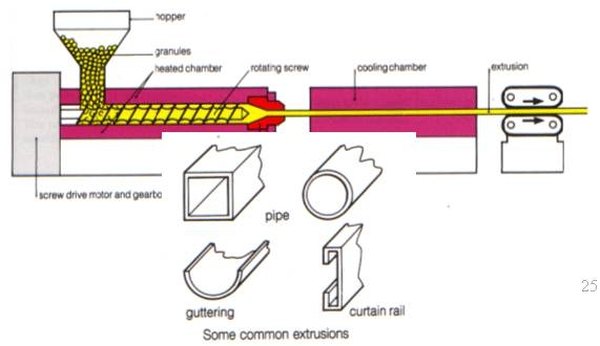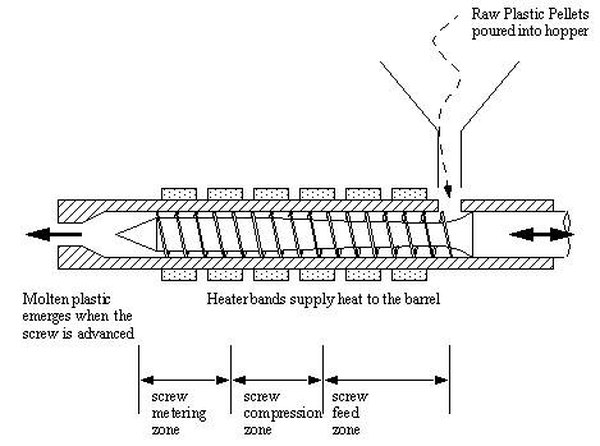
.................................................................................................................................................................
The Plastic
Manufacturing Process
By Contributing Writer
Plastic Injection Molding
Process
Injection molding is one of
the main methods by which parts are manufactured from plastic.
The first step in the
injection molding process is to feed plastic pellets into the hopper, which
then feeds the pellets into the barrel.
The barrel is heated and contains
a reciprocating screw or a ram injector. A reciprocating screw is typically
found in machines that produce smaller parts.
The reciprocating screw
crushes the pellets, making it easier for the plastic to be liquefied.
Toward the front of the
barrel, the reciprocating screw propels the liquefied plastic forward, thereby
injecting the plastic through a nozzle and into the empty mold.
Unlike the barrel, the mold
is kept cool to harden the plastic into the correct shape. The mold plates are
held closed by a large plate (referred to as a movable platen).
The movable platen is
attached to a hydraulic piston, which puts pressure on the mold. Clamping the
mold shut prevents plastic from leaking out, which would create deformities in
the finished pieces.
Plastic Extrusion Molding
Process
Extrusion molding is another
method of manufacturing plastic components.
Extrusion molding is very
similar to injection molding and is used to make pipes, tubes, straws, hoses
and other hollow pieces.
Plastic resin is fed into a
barrel where it is liquefied. A rotating screw propels the liquefied plastic
into a mold, which contains a tube-shaped orifice.
The size and shape of the
tube determines the size and shape of the plastic piece. The liquefied plastic
then cools and is fed through an extruder, which flattens the plastic and forms
the piece into its final shape.
Issues That Arise in the
Plastic Manufacturing Process
A number of complications
can arise during the plastic manufacturing process, including burned parts,
deformities, surface imperfections and brittle parts.
Parts become burned when the
molds are not kept cool or if the melting temperature in the barrel is too
high.
Additionally, if the
reciprocating screw becomes jammed or is not rotating fast enough, liquefied
resin will remain in the barrel too long and become scorched.
Surface imperfections and
deformities occur when the surface temperature of the mold is uneven, if the
molds are not clamped tightly enough or if the melting temperature is too high.
Brittle pieces are formed
when not enough liquefied resin is injected into the mold or if the plastic
hardens before the mold can be filled.
Regular testing and calibration
of injection and extrusion molding machines is critical to ensure that the
process runs smoothly.



No comments:
Post a Comment